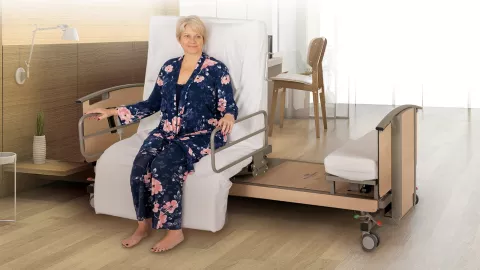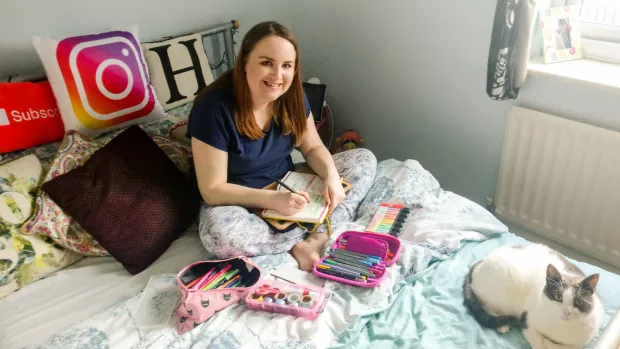
Getting in and out of bed with multiple sclerosis
Shaun Masters is the occupational therapist and equipment specialist for Theraposture, one of our partners. In this blog, Shaun shares their advice on getting in and out of bed for people living with MS.
I’ve worked as an occupational therapist in the community for years. And I see many people with MS finding it hard to get in and out of bed. This is usually because they can’t lift their legs from the floor up to the height of the mattress. And this can also be made worse by pain or fatigue. In this blog, I’ll be talking about ways to make bed transfers easier.
Why is it important to sleep in a bed?
Lying flat in bed has many health benefits and getting a good night’s sleep helps the body to recharge. The recommended amount of sleep for an adult is 7-8 hours. And getting the right amount has a positive effect on mood, function, and general wellbeing.
Not being able to get into bed can affect partners, spouses, siblings, and home carers. It's important to think about the risk of injury to the person and their carer - especially when thinking about their back. But above all, it takes away the person’s independence, forcing them to rely on carer support.
How to make getting in and out of bed easier
1. Correct mattress height
This is forgotten about but can have a big impact on getting into and out of bed. You should be able to sit on the edge of the bed with your ankles, knees, and hips all at a 90-degree angle. If the angle is greater than this, your bottom isn’t back on the mattress far enough. So you’ll have to work against gravity when lifting legs.
If your mattress is too high, you might sit too close to the edge of it. This increases the risk of sliding onto the floor. If your mattress is too low, your ankles, knees and hips might be at an angle less than 90 degrees. This can affect getting out of bed as your body has further to travel when lifting your body to stand. If this is the case, falls and injury become more of a concern.
2. Fitting a grab rail
Handrails can give you more support when getting in and out of bed. The best place to fit your rail is in line with your pillow. This’ll give you a firm place to hold onto when moving.
3. Choosing the right bed
Beds that lift your upper body up and down come with profile function. This can be helpful if your core or upper limb muscle strength is reduced. This can offer extra support when going from lying to sitting up in bed. A bed that can be raised can also help with standing.
A turning bed, like the Rotoflex from Theraposture, gives full-powered rotation. It also helps you to stand safely from your bed on your own terms. And being able to rise vertically from a seated position reduces the risk of being tipped forward.
The Rotoflex moves the person from a lying to seated position with their feet on the floor at the side of the bed. Changing the height of the bed in the seated position will then lift the person in safe way. So a controlled sit-to-stand or stand-to-sit can be done, without the risk of a fall.
Find out more about the Rotoflex on Theraposture's website
4. The right mattress density
A soft mattress can make repositioning and getting in and out of bed more difficult because it absorbs effort. When a hand or arm is pushed down into a mattress it’ll sink into it. You need a firm mattress to support changing positions and standing or sitting.
Making your bed transfers easier can help you to stay independent at home. An occupational therapist can give you advice if you struggle with getting in and out of bed. They can also make a referral to your local authority for your needs to be assessed.
The products and services on this page might be of benefit to some of you in our MS community. But we can’t make any guarantee on their quality. As with any purchase, please do your research to make sure it’s right for you.




